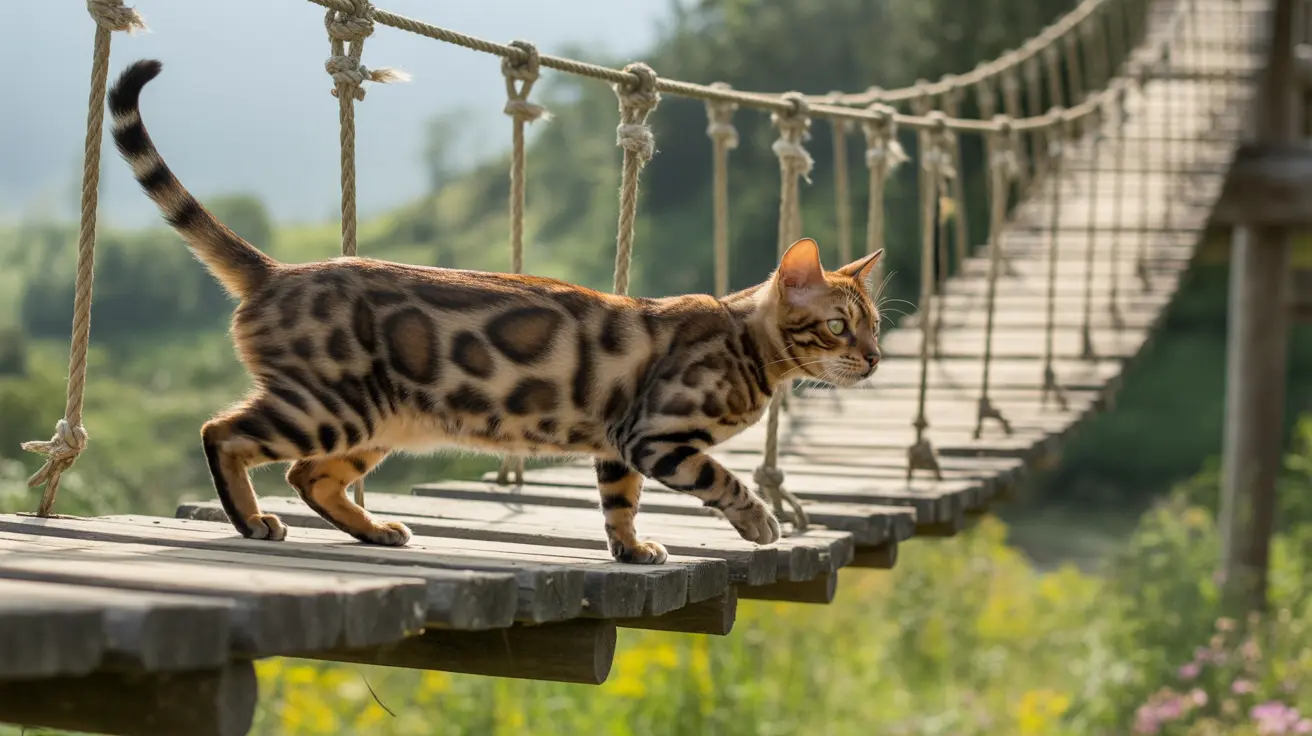Looking to give your indoor cat the ultimate climbing and exploration experience? A cat bridge could be the perfect addition to your home. These innovative structures not only provide entertainment and exercise but also tap into your cat's natural instincts for elevated exploration and safe passage between spaces.
Whether you're a DIY enthusiast or just getting started with pet-friendly home improvements, creating a cat bridge can transform your living space into an engaging feline paradise. Let's explore everything you need to know about building and installing the perfect cat bridge for your furry friend.
Understanding the Benefits of Cat Bridges
Cat bridges serve multiple essential functions in your pet's life. They provide crucial vertical territory, especially important in multi-cat households where space management can prevent territorial disputes. These elevated pathways encourage natural climbing behaviors and help maintain your cat's physical fitness through regular exercise.
Mental stimulation is another significant advantage. Cats naturally seek high vantage points to observe their surroundings, and bridges satisfy this instinctive behavior while providing a sense of security and control over their environment.
Choosing the Right Cat Bridge Design
Several popular designs cater to different needs and spaces:
Suspension Bridges
These classic designs use rope and wooden platforms to create an Indiana Jones-style experience. They're particularly engaging for active cats and can be adjusted for different skill levels.
Carpeted Platforms
Perfect for cats who enjoy scratching, these bridges offer both transit and enrichment opportunities. The carpet provides excellent grip and comfort for your cat's paws.
Enclosed Tunnels
Ideal for timid cats or outdoor installations, these bridges provide extra security and protection while allowing safe passage between spaces.
Essential Materials and Construction Tips
For a basic DIY cat bridge, you'll need:
- Sturdy plywood or wooden boards
- High-quality sisal rope
- Heavy-duty mounting brackets
- Screws and anchors
- Carpet or other non-slip materials
- Basic tools (drill, saw, measuring tape)
When building your cat bridge, always prioritize safety. Ensure all mounting points can support several times your cat's weight, and sand down any rough edges that could cause injury.
Installation and Placement Strategies
Strategic placement is crucial for maximum usage and safety. Consider installing your cat bridge:
- Above doorways to utilize unused space
- Between furniture pieces to create pathways
- Along walls at varying heights
- Near windows for added environmental enrichment
Ensure the bridge height is appropriate for your cat's ability level and that there are multiple access points for stress-free navigation.
Maintaining Your Cat Bridge
Regular maintenance ensures your cat bridge remains safe and appealing:
- Check mounting hardware monthly
- Inspect ropes and surfaces for wear
- Clean regularly to prevent dirt buildup
- Replace worn components promptly
- Monitor your cat's usage patterns
Frequently Asked Questions
What are the main benefits of installing a cat bridge in my home?
Cat bridges provide essential exercise, mental stimulation, and vertical territory for your cat. They help reduce stress, encourage natural behaviors, and can prevent obesity through increased activity.
How do I choose the safest and most comfortable materials for building a DIY cat bridge?
Select sturdy materials like hardwood or high-quality plywood, strong sisal rope, and non-slip surfaces such as carpet. Ensure all hardware is rated for several times your cat's weight and use proper anchoring methods.
What are the best ways to encourage a hesitant cat to use a new cat bridge?
Place treats, catnip, or favorite toys on the bridge. Start with the bridge at a lower height and gradually raise it. Never force your cat to use the bridge; let them explore at their own pace.
How can cat bridges help reduce stress and conflicts in multi-cat households?
Cat bridges create additional vertical territory and provide multiple pathways through spaces, reducing competition for resources and allowing cats to avoid confrontations by choosing alternative routes.
What types of cat bridges are suitable for outdoor catios and how do I ensure their durability?
For outdoor use, choose weather-resistant materials like pressure-treated wood and galvanized hardware. Consider enclosed designs with wire mesh or solid sides for added safety, and ensure proper weatherproofing of all components.
With proper planning, construction, and maintenance, a cat bridge can become an enriching addition to your home that provides years of enjoyment for your feline companion. Remember to always prioritize safety and observe your cat's preferences when designing and installing these engaging structures.






